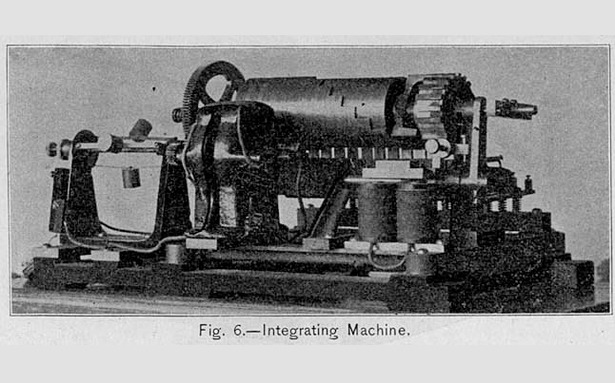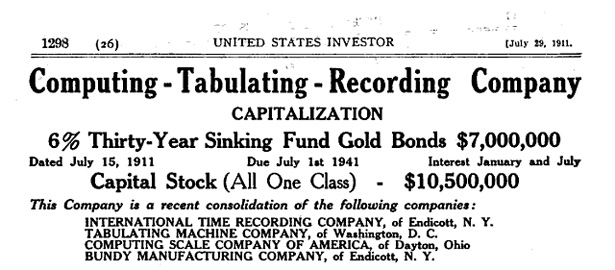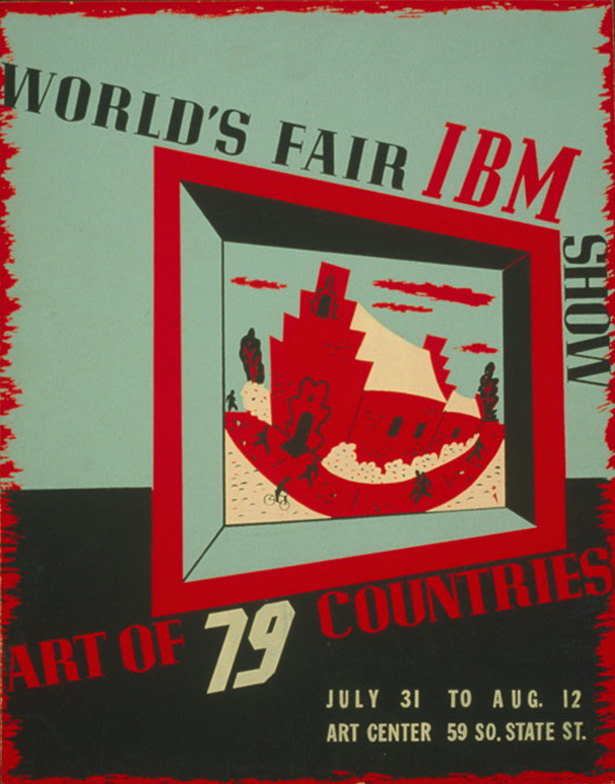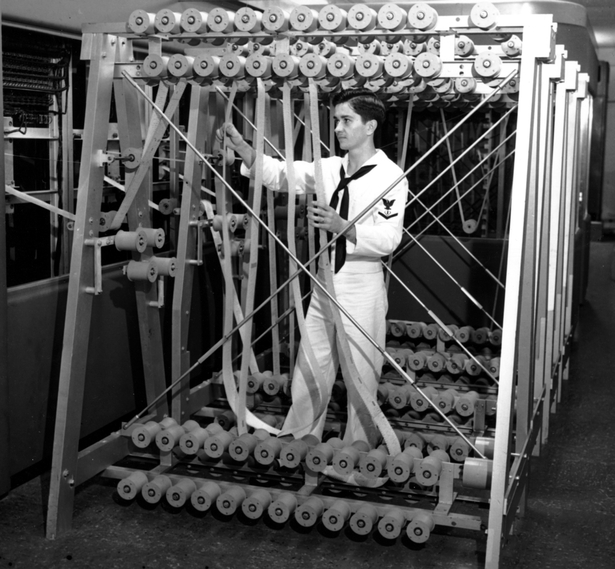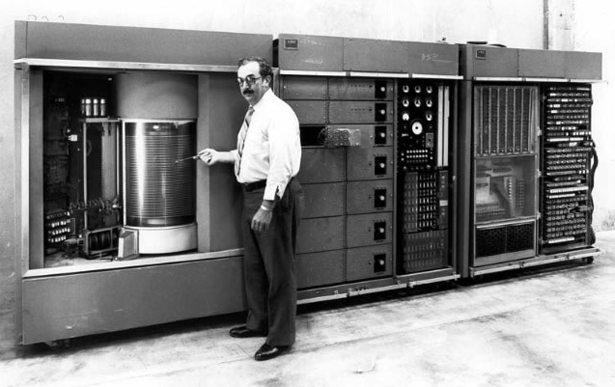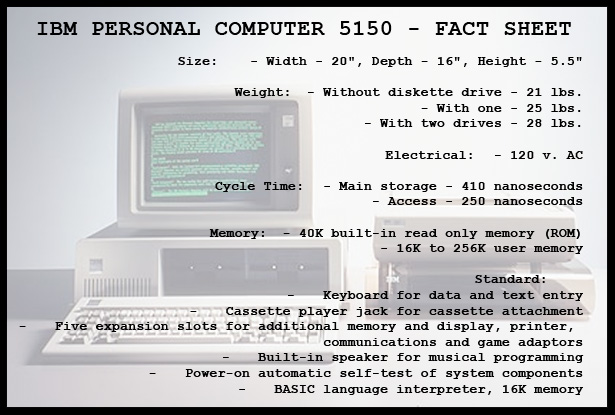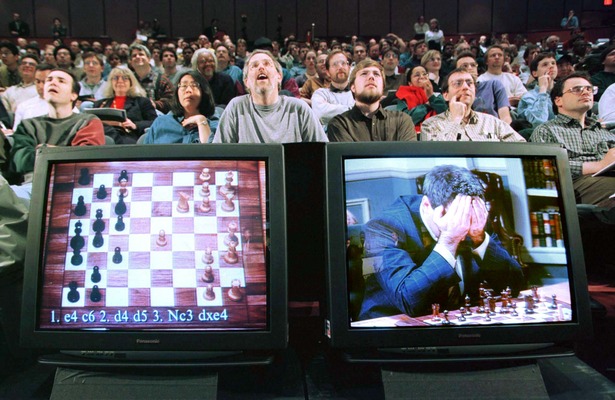On this day in 1911, IBM began operation as the Computing-Tabulating-Recording Company. Since then, IBM's institutional career has mirrored both the rise of computing and modern corporations, two hallmarks of our age. The following timeline traces Big Blue's adventures from its start as a company with $950,000 in revenue to its current state. Today, the multinational rakes in almost $100 billion a year and employs 450,000.
1911: IBM's precursor, the Computing-Tabulating-Recording Company (CTR), created by the merger of The International Time Recording Company Computing Scale Company, and the Tabulating Machine Company. The companies combined revenue for the fiscal year 1910 was "excess of $950,000." A bulletin ran in United States Investor in July of that year.
1915: The company's founder, Thomas J. Watson, Sr. who coined IBM's motto "Think," elaborates on his vision for thought.
1924: CTR becomes International Business Machines aka IBM. Here's a look at the history of the IBM logo from its birth through the CTR days until today.
1931: Talk about company spirit. IBM employees sang the company's rally song in this incredible recording. In case you want to sing along, here's the chorus:
That's the spirit that has brought us fame!
We're big, but bigger we will be
We can't fail for all can see
That to serve humanity has been our aim!
Our products now are known, in every zone,
Our reputation sparkles like a gem!
We've fought our way through -- and new
Fields we're sure to conquer too
For the EVER ONWARD I.B.M.
1935: The U.S. adopts Social Security and IBM's punched card machines to help with the massive record keeping required to keep tabs on tens of millions of Americans.
1939: International Business Machines sponsors art at the 1939 World's Fair.
1942: IBM becomes involved in the war effort, helping keep track of vital statistics. Below, we see an IBM tabulating machine below used in keeping track of freight traffic in the country.
1944: IBM co-develops its first computer, the Automated Sequence Controlled Calculator aka Mark I, with Harvard University. It was used by the Navy to calculate gun trajectories.
1946: IBM provides a translation system for the Nuremberg trials.
1952: This was the Golden Age of IBM. Thomas J. Watson, Jr., became the president of the company, marking, by the company's own reckoning, the beginning of its time as a modern corporation.
1956: During this period, IBM made a number of important electronic advancements. Below, you can see the first commercial hard disk drive, the 350 RAMAC Disk Storage Unit, which was a major component of the groundbreaking 305 RAMAC computer.
1960: IBM employs 100,000 people. During this period, IBM made and sold massive computers to large governments and corporations. Computers were not yet devices for regular people. In 1964, MIT's Martin Greenberger took to the pages of this magazine to extoll the widespread use of computers ... and there were only 20,000!
Only a decade ago, in 1954, a UNIVAC was delivered to the General Electric Company in Louisville for business use. Up to that point, computers had been applied almost exclusively to scientific calculation. Quickly, payroll, inventory, and customer accounting became fair game. Today there are probably more than twenty thousand computers in use within the United States, and correspondingly large numbers are installed in many other countries around the world.
1968: Charles and Ray Eames put out "Powers of 10," a film about "the effect of adding another zero." Fundamentally about scale, it arrived on the scene at the tail end of the post-war boom, a period in which American industry basically did add another zero, growing and globalizing. IBM's computers helped businesses both manage and produce massive amounts of data, thereby assuring that ever more powerful machines would be needed to keep up with both sides of the information problem.
1980: Microsoft and IBM sign a deal to put the former's operating system on IBM computers.
1981: The IBM Personal Computer 5150 debuts, a landmark in the transition of computing from the province of the military and big government to everyday people.
1985: IBM clones permeate the market. Without really trying to, IBM-compatible comes to mean "every personal computer not produced by Apple." Though the company was losing marketshare in desktop computing, it was still setting the agenda including the use of Microsoft's operating system, MS-DOS.
1991: The company's board approves a new strategy for IBM. The corporation that was famous for business machines set out to become "a world-class services company." At the time, IBM made $6 billion from business services. By 2000, the company made $33 billion a year in services revenue. In 2010, IBM made $56 billion from business and technology services.
1996: Microsoft's market value passes IBM's market value, as personal computing explodes, largely led by IBM's competitors like Dell and Compaq running Microsoft Windows.
1997: IBM Deep Blue beats Garry Kasparaov, marking the first time a computer had defeated a reigning world champion in a traditional match. Kasparov resigned after 19 moves. (Reuters/Peter Morgan)
2005: Lenovo purchases IBM's personal computing division, completing IBM's transition into a services company and away from selling directly to consumers. The company makes tens of billions of dollars selling services -- not machines -- to businesses.
2011: IBM turns 100. The company celebrates by passing Microsoft's market value for the first time in 15 years and watching the Watson computing platform destroy the human competition in Jeopardy. (Even Kasparov had to laud IBM's team for the win.)
We want to hear what you think about this article. Submit a letter to the editor or write to letters@theatlantic.com.
